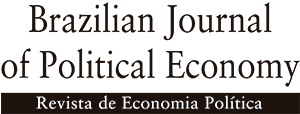Resumo em Português:
RESUMO Este texto critica a ideia, bastante difundida atualmente, da necessidade de se buscar microfundamentos para a macroeconomia. Os autores argumentam que esses dois campos da economia, a micro e a macroeconomia, utilizam abordagens metodológicas diferentes. A microeconomia trata dos problemas econômicos segundo uma metodologia lógico-dedutiva, enquanto a macroeconomia caracteriza-se mais por uma abordagem histórico-indutiva. A tentativa de reduzir-se a macroeconomia à microeconomia, ou vice-versa, traz apenas um empobrecimento à ciência e ao debate econômico, em que, idealmente, deveria haver espaço para um grande pluralismo de ideias e correntes teóricas.
Resumo em Inglês:
ABSTRACT This paper criticizes the idea, widespread today, of the need to seek micro-foundations for macroeconomics. The authors argue that these two fields of economics, micro and macroeconomics, use different methodological approaches. Microeconomics deals with economic problems according to a logical-deductive methodology, while macroeconomics is more characterized by a historical-inductive approach. The attempt to reduce macroeconomics to microeconomics, or vice versa, brings only an impoverishment to science and economic debate, in which, ideally, there should be room for a great pluralism of ideas and theoretical currents.
